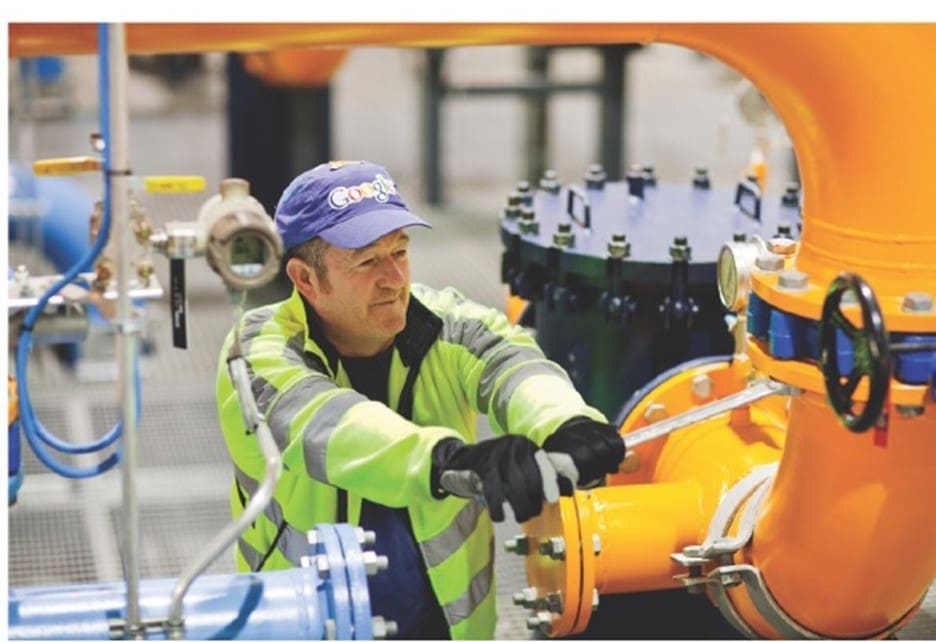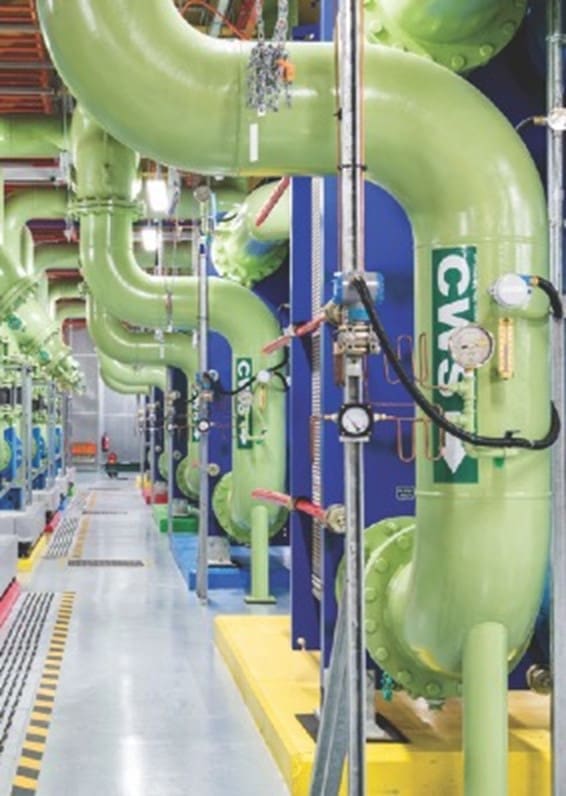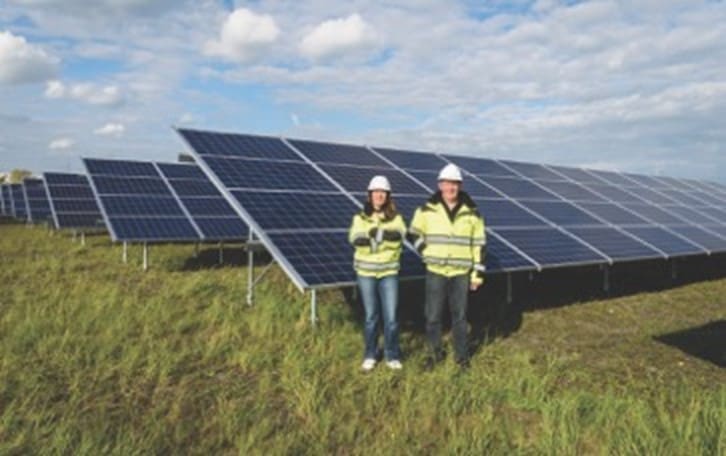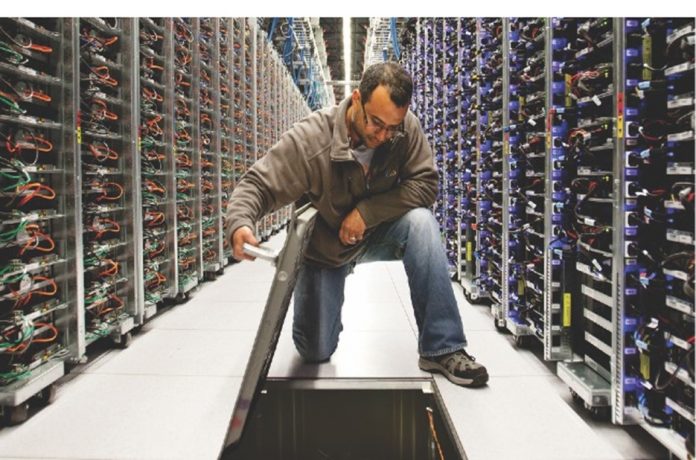On the morning of December 14, 2020, YouTube, Google Docs, Gmail, and Google Classroom all suddenly crashed. In that moment, it seemed the world was put on hold. Entertainment stopped. Workflows were stymied. Ideas couldn’t be shared. Documents were left unedited. And children stuck at home due to the COVID-19 pandemic couldn’t learn. The outage lasted for less than an hour, but it exposed just how reliant the world is on services we take for granted.
The pandemic has increased our dependence on virtual collaboration, accelerating the growth of data. Data centers used to be local. A company would have its own data center and an IT staff to manage it. Now, most data are housed in massive, centralized data centers like those owned and operated by Amazon Web Services, Microsoft Azure, and Google. These highly regulated, audited, and partially automated data centers are the tangible representation of the cloud. But they also consume a lot of energy.
Industrial giant, Honeywell International (Honeywell), and Vertiv, a global digital infrastructure company, are teaming up to reduce data center emissions, improve performance, and increase data center uptime.
THE PROBLEM
According to Honeywell, data centers contribute 3% of global power consumption and 2% of global emissions. The amount of stored data is expected to reach 175 zettabytes by 2025, a 4000% increase from 4.4 zettabytes in 2013. A zettabyte is a trillion gigabytes (GB). Put another way, the amount of stored data is expected to reach the equivalent of 683 billion Apple iPhone 12s by 2025. Data are one of the most valuable and personal resources that exist.
Reducing data center emissions is a bold endeavor. Companies and individuals rely on data centers to function seamlessly and securely 24/7. Honeywell identified that human error and mechanical failure account for 88% of data center downtime. It thinks that its solutions can reduce that number significantly while better monitoring data to make compliance easier and data privacy safer.
THE PLAYERS

Honeywell is the largest US-based industrial company. It has been around for over 100 years, manufacturing products like household thermostats, control systems used in industrial plants, and components used in commercial aircrafts. Honeywell sees growth potential in operational technology (OT) which connects and controls the physical world. It believes OT improvements will contribute to the industrial internet of things (IIOT). IIOT powers the digital transformation in the industrial sector so equipment and processes run more efficiently. Efficiency improvements and automation are possible because of data collection and management.
Honeywell Building Technologies is one of the industrial conglomerate’s four segments. Building Technologies takes Honeywell’s decades of experience in air quality, space constraints, and security, and combines it with Honeywell Forge. Honeywell Forge matches machine learning with autonomous control technologies in an enterprise performance management platform. The platform collects and processes data from industrial products and systems and then automatically implements efficiency improvements. Buildings like hotels, stadiums, and even data centers can use Honeywell Forge to better understand their operations and reduce energy consumption. In sum, Honeywell built software to couple with its hardware so it can improve asset performance and safety.
Unlike Honeywell, which is more generalized, Vertiv designs, builds, and services infrastructure — namely, data centers for governments and social media, financial, healthcare, transportation, retail, and educational companies. Some of its largest customers include Alibaba, AT&T, China Mobile, Ericsson, Siemens, Tencent, and Verizon.
Data centers have incredibly complicated infrastructure systems whose failure would result in catastrophic financial and emotional losses. Basic functions like plumbing and electricity are one thing, but there’s also massive underground water and cooling systems to consider. Vertiv is one of the companies that develops data center cooling solutions tasked with maintaining environmental conditions suitable for data center equipment. The cooling systems transfer the heat from the information technology equipment using a method — such as computer room air handler units with water-cooled chillers and cooling towers — to a heat sink outside the data center.
THE SPARK

Honeywell will couple its building management systems with Vertiv’s data center expertise. You can think of Honeywell as providing the general knowledge of what makes a building smart and safe and combining that with Vertiv’s specialized knowledge on data centers. “Data centers face similar challenges as other buildings that have disparate systems that were not designed to work together, but they experience these challenges on a greater scale,” said Vimal Kapur, president and CEO of Honeywell Building Technologies. “We look forward to collaborating with Vertiv to offer integrated solutions that make it easier for data center operators to distill the mountains of data they pull from their equipment into actions that create more efficient and environmentally friendly operations.”
CHEAPER RENEWABLE ENERGY

Honeywell and Vertiv credit data centers for building a substantial amount of infrastructure using renewable energy. Because the advent of centralized data centers has been a relatively recent development, much of the infrastructure has benefited from lower renewable energy costs. Solar, for example, is now regarded as one of the cheapest available sources of electricity. In its World Energy Outlook 2020, the International Energy Agency (IEA) notes that solar output could grow by more than 40% by 2040 (compared to 2018). It attributed this growth to solar power being 20% to 50% cheaper than previous estimates. However, the IEA also sees natural gas demand rising by 30% by 2040 as the bridge fuel continues to replace coal for power generation, and to an extent, oil for transportation.
2020 was a big year for renewables. According to the US Energy Information Administration, US renewable energy consumption surpassed coal for the first time in over 130 years. The significant milestone was achieved primarily due to lower renewable energy costs and state and federal subsidies.
Lower solar costs bode well for constructing sustainable data centers. Honeywell and Vertiv will build upon this tailwind by focusing on microgrid solutions. Microgrids are smaller, decentralized energy systems often comprised of some sort of renewable power generation, like wind or solar, conventional power generation, reserve power, and power storage. According to Honeywell and Vertiv, this solution is best for integrating alternative energy sources, like solar arrays, fuel cells, and batteries.
Honeywell and Vertiv are in the early stages of their collaboration, but their first focus will be on building what they call an “intelligent power management solution.” The solution allows the data center to manage and supervise its energy and control system from a single integrated platform. The system is expected to provide the data center with a series of tools and options to optimize energy costs, measure and reduce emissions in-line with stated goals, and better account for external risks like weather and grid reliability. The power management solution gives centers an intelligent and autonomous selection of energy options, analytics, and forecasting that empowers the data center to make the best solution for its energy costs and sustainability goals.
Although the solution is in lockstep with the core competencies of both companies, nothing like it has ever been attempted on a global scale. “Business continuity is more critical than ever. More people [are] working, learning, and connecting remotely, driving a simultaneous explosion in data and demand for new data centers. There is need and opportunity for data centers to be more efficient, reliable, and sustainable,” said Rob Johnson, CEO of Vertiv. “Our collaboration with Honeywell will help us to collectively better serve our data center customers. Our offerings complement each other to provide greater value to data center operators.”

















